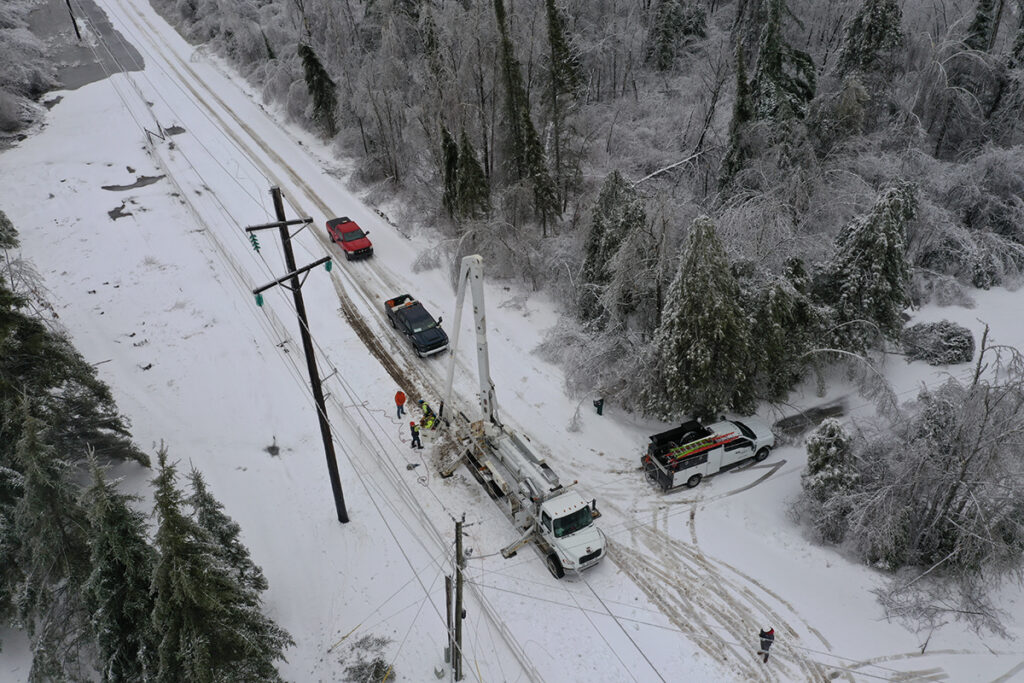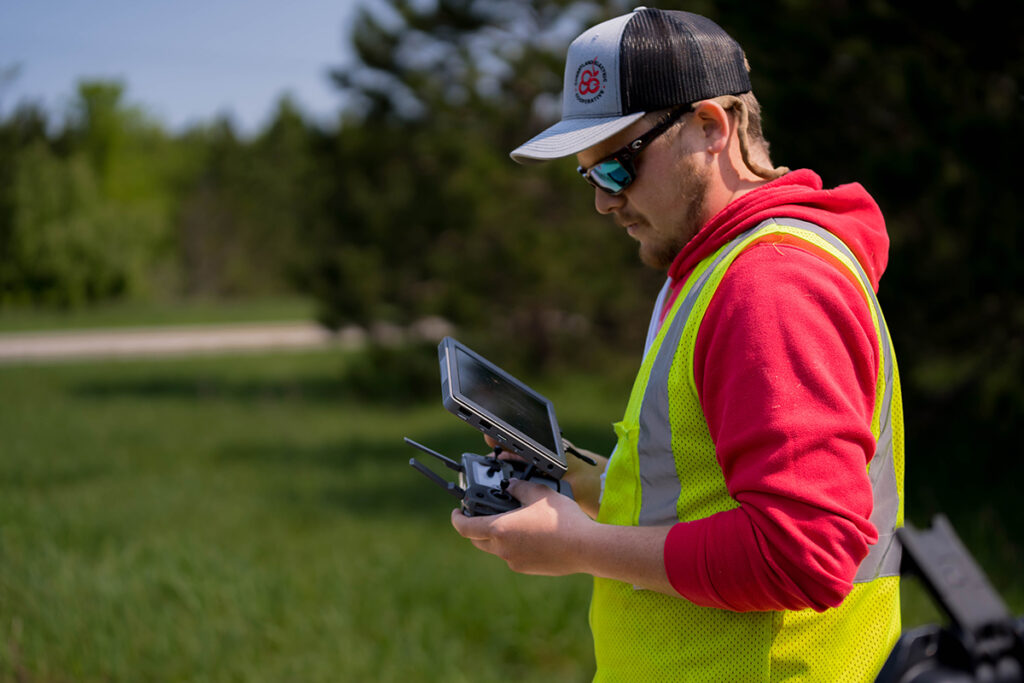
When an unusually disastrous ice storm hit Northern Michigan in late March, Cherryland Electric Cooperative was ready to help its hard-hit co-op neighbors with line crews, engineers, communicators—and drones.
“The affected co-ops were telling us, ‘We can’t even get around our territory, the damage is just so devastating, literally you’ll drive into an area and five trees will fall down behind you and you’re having to turn around and cut your way back out,’” Cherryland CEO Rachel Johnson said. “At that point, I said, ‘Hey, we have drones.’”
The Grawn-based co-op’s Unmanned Aerial System (UAS) program proved pivotal for safe and efficient mutual aid to Boyne City-based Great Lakes Energy Cooperative, Onaway-based Presque Isle Electric & Gas Co-op and Cadillac-based Wolverine Power Cooperative, the wholesale generation and transmission provider.
Having drones “let us accelerate the pace of their damage assessment about threefold,” said Johnson. “When there’s a storm where it’s really hard to move vehicles and people around, having a person stand in one place and inspect miles of line clearly has both a timing and safety advantage.”
Cherryland, working with Northwestern Michigan College, launched drones over a two-week period along rugged rights of way deep into ice-coated forests to spot widespread ruin after the unseasonable winter blast. The school’s “beyond visual line of sight” (BVLS) federal flight exemption allowed the drones to capture images of 50 poles on average per flight with zoom and infrared capability cameras on 25-minute batteries.
“It was a very, very new experience for the co-ops up here to utilize drones in that manner,” said Zach Endres, Cherryland’s communications control field engineer who piloted a drone during the initial mutual aid recovery effort. Later, armed with maps, Endres guided the NMC pilots through the co-ops’ territory and drafted damage reports.

“The first couple days of the storm was definitely the most dangerous,” Endres said. “There was still a lot of ice holding on the lines and poles and trees, and branches were breaking off. You’re flying the drone and all of a sudden you just hear a crack. You always had to keep your head on a swivel and pay attention to your surroundings.”
Cherryland first digitized its power line and pole inspection reports in 2019, then tested the use of drones for aerial maintenance shots and got five staff UAS licensed at the college, which has a robust drone pilot training program. The co-op began testing the program in 2022.
Last year, Cherryland and NMC entered an agreement in which college trainees conduct aerial inspections of the co-op’s transmission infrastructure and take up to 40 images of poles. The school’s BVLS exemption allows their pilots to fly drones farther and inspect dozens of poles in a single day. A contractor downloads the data for the co-op’s reports.
The results to date show that Cherryland is meeting its goals of greater safety, efficiency and reliability: Nearly 7,000 poles have been inspected with 40% less field work at an annual savings of $45,000. The co-op is on target to eventually cut in half its 14-year pole and line inspection cycle.
Endres foresees a time when drones can be strategically placed on the co-op’s system and deployed from the office and artificial intelligence will analyze the images captured by the drone and provide a damage assessment within minutes. “That’s kind of where I imagine the drone program going,” he said. “You won’t need a physical pilot in the field.”

That could be especially useful for co-ops, where drone pilot may be one too many roles for staff to play. Cherryland temporarily shelved its drone program before partnering with NMC and seeing it bloom.
“We realized we couldn’t possibly do what we needed to do with our internal staff and the program just kind of sat for a couple years,” said Johnson, who credits “the scrappy, gritty creativeness” of the co-op team with bringing it back to life.
Cherryland also uses its UAS operations to help grow the next-generation co-op workforce. The co-op finds that its drones with their video game-like controls captivate middle and high schoolers at career fairs.
“Everybody’s like, ‘Wait a minute, now that looks like a job I could get excited about because it doesn’t seem stodgy and old; it feels fun and cutting edge,’” Johnson said. “It helps us with setting up a longer-term talent pipeline of people who might think a little differently about coming to work for their local co-op.”
Cathy Cash is a staff writer for NRECA.